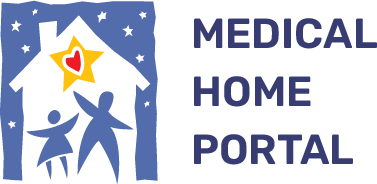SUDEP (Sudden Death with Epilepsy)
Children with epilepsy are at risk for sudden death, although the deaths are not always, or even usually, caused by epilepsy. Although the risk is higher in children with symptomatic epilepsy, epilepsy that can be attributed to an underlying condition, and children with neurodevelopmental disorders, SUDEP can also occur in otherwise typical children whose seizures were easy to stop with medication. Families and primary care clinicians should be aware of SUDEP. A 2017 study found that 75% of primary care clinicians were unaware of SUDEP, and most expect pediatric neurologists to discuss such epilepsy-related risks [Berl: 2017], though that frequently does not occur. [Friedman: 2014]
Incidence
The reported incidence of SUDEP in children with epilepsy has ranged from
0.16 to 0.31 per 1000 patient years; mean of 0.22/1000 patient years or 1 in 4500
children with epilepsy per year. [Harden: 2017] The
incidence is higher in those children with drug-resistant epilepsy [Saxena: 2018], defined by the International League Against Epilepsy
as having failed to achieve sustained seizure freedom despite adequate trials of 2
tolerated, appropriately chosen and used antiepileptic drug schedules (whether as
monotherapies or in combination). [Kwan: 2010]
Although risk factors for SUDEP in children are not well
understood, difficult to control epilepsy, the presence of generalized convulsive
seizures, poor adherence to medication dosing, nighttime seizures, and comorbid
conditions are thought to be important. [Donner: 2014]
Practice Guidelines
The 2017 guidelines recommend the following for children with epilepsy: [Harden: 2017]
- Clinicians caring for children with epilepsy should inform
the children's parents or guardians that:
- There is a rare risk of SUDEP.
- In 1 year, SUDEP typically affects 1:4,500 children with epilepsy; in other words, annually, 4,499 of 4,500 children will not be affected by SUDEP.
- For persons with epilepsy who continue to experience generalized tonic-clonic seizures (GTCS), clinicians should continue to actively manage epilepsy therapies to reduce seizure occurrences and the risk of SUDEP while incorporating patient preferences and weighing the risks and benefits of any new approach.
- For persons with frequent GTCS and nocturnal seizures, clinicians may advise selected patients and families, if permitted by their individualized epilepsy and psychosocial circumstances, to use nocturnal supervision or other nocturnal precautions, such as the use of a remote listening device to reduce SUDEP risk. [Maguire: 2016]
- Clinicians should inform their patients with epilepsy that seizure freedom, particularly freedom from GTCS (which is more likely to occur with medication adherence), is strongly associated with a decreased risk of SUDEP.
Resources
Information & Support
Related Portal Content
Assessment and management information for the primary care
clinician caring for the child with seizures:
- Seizures/Epilepsy
- Childhood Absence Epilepsy Childhood Epilepsy with Centrotemporal Spikes (CECTS)
- Infantile Spasms
- Missing issue with id: 7addf759.xml
- Missing issue with id: aa8b09e2.xml
- Epilepsy Surgery
For Parents and Patients
Epilepsy-Related Deaths (Epilepsy Action)
Focuses on ways to reduce the risk of sudden unexpected death in epilepsy SUDEP.
SUDEP: Information for Parents of Children with Epilepsy (CDC)
Information about risk factors in children, steps to reduce the risk of SUDEP, and questions to ask your child’s doctor; Center
for Disease Control and Prevention.
SUDEP (Epilepsy Foundation)
Recommendations regarding the discussion and prevention of SUDEP including webinars and a moderated question and answer section.
Practice Guidelines
Harden C, Tomson T, Gloss D, Buchhalter J, Cross JH, Donner E, French JA, Gil-Nagel A, Hesdorffer DC, Smithson WH, Spitz MC,
Walczak TS, Sander JW, Ryvlin P.
Practice Guideline Summary: Sudden Unexpected Death in Epilepsy Incidence Rates and Risk Factors: Report of the Guideline
Development, Dissemination, and Implementation Subcommittee of the American Academy of Neurology and the American Epilepsy
Society.
Epilepsy Curr.
2017;17(3):180-187.
PubMed abstract / Full Text
Helpful Articles
Pickrell WO, Kerr MP.
SUDEP and mortality in epilepsy: The role of routinely collected healthcare data, registries, and health inequalities.
Epilepsy Behav.
2020;103(Pt B):106453.
PubMed abstract
Authors & Reviewers
| Author: | Lynne M. Kerr, MD, PhD |
| Reviewer: | Cristina Corina Trandafir, MD, PhD |
| 2019: first version: Lynne M. Kerr, MD, PhDA |
Page Bibliography
Berl MM, Goodkin HP, Kroner BL, Bumbut A, Lapham G, Gaillard WD.
Sudden Death in Epilepsy: Knowledge among Pediatric Providers.
J Pediatr.
2017;188:291-293.e3.
PubMed abstract
Donner EJ.
Sudden unexpected death in epilepsy: Who are the children at risk?.
Paediatr Child Health.
2014;19(7):389.
PubMed abstract / Full Text
Friedman D, Donner EJ, Stephens D, Wright C, Devinsky O.
Sudden unexpected death in epilepsy: knowledge and experience among U.S. and Canadian neurologists.
Epilepsy Behav.
2014;35:13-8.
PubMed abstract / Full Text
Harden C, Tomson T, Gloss D, Buchhalter J, Cross JH, Donner E, French JA, Gil-Nagel A, Hesdorffer DC, Smithson WH, Spitz MC,
Walczak TS, Sander JW, Ryvlin P.
Practice Guideline Summary: Sudden Unexpected Death in Epilepsy Incidence Rates and Risk Factors: Report of the Guideline
Development, Dissemination, and Implementation Subcommittee of the American Academy of Neurology and the American Epilepsy
Society.
Epilepsy Curr.
2017;17(3):180-187.
PubMed abstract / Full Text
Kwan P, Arzimanoglou A, Berg AT, Brodie MJ, Allen Hauser W, Mathern G, Moshé SL, Perucca E, Wiebe S, French J.
Definition of drug resistant epilepsy: consensus proposal by the ad hoc Task Force of the ILAE Commission on Therapeutic Strategies.
Epilepsia.
2010;51(6):1069-77.
PubMed abstract
Maguire MJ, Jackson CF, Marson AG, Nolan SJ.
Treatments for the prevention of Sudden Unexpected Death in Epilepsy (SUDEP).
Cochrane Database Syst Rev.
2016;7:CD011792.
PubMed abstract
Pickrell WO, Kerr MP.
SUDEP and mortality in epilepsy: The role of routinely collected healthcare data, registries, and health inequalities.
Epilepsy Behav.
2020;103(Pt B):106453.
PubMed abstract
Saxena A, Jones L, Shankar R, McLean B, Newman CGJ, Hamandi K.
Sudden unexpected death in epilepsy in children: a focused review of incidence and risk factors.
J Neurol Neurosurg Psychiatry.
2018;89(10):1064-1070.
PubMed abstract

